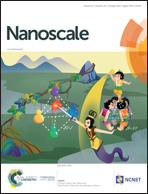Correlation between the translational and rotational diffusion of rod-shaped nanocargo on a lipid membrane revealed by single-particle tracking
Abstract
Revealing the diffusion dynamics of nanoparticles on a lipid membrane plays an important role in a better understanding of the cellular translocation process and provides a theoretical basis for the rational design of delivery cargo. However, most studies focus on the investigation of the positional fluctuations of the nanocargo on the fluidic membrane, ignoring the contribution from orientational variation. In particular, less is known about the correlation between the rotational freedom and translational movability of a particle surveying a lipid membrane. In this work, the ligand–receptor interaction (by using streptavidin (SA) and biotin as the model)-modulated diffusion dynamics of rod-shaped nanocargo (i.e., gold nanorods, GNRs) on an artificial lipid membrane was explored with dark-field (DF) optical microscopy. A correlation between translational and rotational motion was observed whereby the freedom of rotational motion could be released intermittently. The conformational entropy release is usually associated with the promotion of translational diffusion, where large step surveying on the lipid membrane takes place subsequently. These new messages might afford valuable kinetic information for the design of nanocargo with appropriate surface functionality to achieve satisfactory cellular uptake efficiency.



 Please wait while we load your content...
Please wait while we load your content...